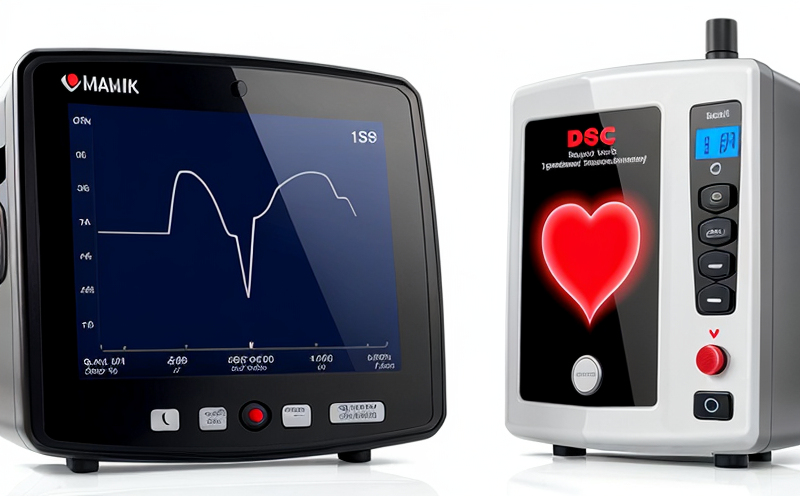ASTM F2129 Electrochemical Corrosion Testing of Stents
The ASTM F2129 standard is a cornerstone in the quality assurance process for medical devices, particularly for cardiovascular stents. This testing method evaluates the electrochemical corrosion resistance of metallic components used in stents and other implantable medical devices. The primary purpose of this test is to ensure that the materials used in these devices do not degrade or corrode under physiological conditions, thereby maintaining their integrity and effectiveness during prolonged use.
The standard specifies a procedure for testing the electrochemical corrosion resistance of metallic components using an accelerated method based on the Cyclic Corrosion Testing (CCT) technique. This technique simulates the corrosive environment that stents might encounter in vivo by exposing the material to saline solutions containing chloride and other ions present in physiological fluids.
The ASTM F2129 test is particularly critical for ensuring the reliability of cardiovascular devices, which are often implanted for long durations. The test helps identify potential issues early on in the development process, allowing manufacturers to make necessary adjustments before product release. This ensures that only high-quality materials and designs reach patients, reducing the risk of adverse events.
The testing procedure involves several steps including specimen preparation, immersion into a corrosive solution, application of cyclic current, and subsequent drying cycles. The specimens are then visually inspected for any signs of corrosion or degradation. If necessary, more sophisticated techniques such as weight loss measurements can be employed to quantify the extent of corrosion.
The results of this test provide critical information about the material's resistance to electrochemical corrosion under specific conditions. This data is crucial for manufacturers and regulatory bodies alike in ensuring that devices meet stringent safety and performance standards. By adhering to ASTM F2129, medical device companies can demonstrate compliance with relevant international regulations and gain greater confidence in their products' durability and reliability.
ASTM F2129 is widely recognized as a robust method for evaluating the electrochemical corrosion resistance of metallic components used in stents. Its application ensures that only high-quality materials are utilized, contributing to patient safety and satisfaction. This standard plays a pivotal role in the design, manufacturing, and quality assurance processes for cardiovascular devices.
When selecting this test, it is important to consider not just the technical aspects but also the broader implications for patient care. By ensuring that stents meet ASTM F2129 standards, medical device manufacturers contribute significantly to reducing the risk of complications associated with implantable devices. This commitment to quality and reliability is essential in maintaining trust between healthcare providers and patients.
Why Choose This Test
- Precision: ASTM F2129 provides a precise method for evaluating the electrochemical corrosion resistance of metallic components used in stents.
- Regulatory Compliance: Adherence to this standard ensures compliance with international regulations, facilitating easier market entry and acceptance.
- Early Detection: The test allows manufacturers to identify potential issues early on in the development process, leading to more robust product designs.
- Patient Safety: By ensuring that only high-quality materials are used, this test contributes significantly to patient safety and satisfaction.
- Reliability: ASTM F2129 helps guarantee the reliability of cardiovascular devices, which are often implanted for long durations.
- Data Validation: The results provide critical information about the material's resistance to electrochemical corrosion under specific conditions.
- Confidence in Compliance: This method provides a high level of confidence that products will meet stringent safety and performance standards.
- Patient Trust: By ensuring compliance with this standard, manufacturers contribute to maintaining trust between healthcare providers and patients.
Quality and Reliability Assurance
The ASTM F2129 electrochemical corrosion testing is a vital tool in the quality control arsenal of medical device manufacturers. By subjecting stents to this rigorous test, companies can ensure that their products meet the highest standards of reliability and safety. This process involves several key steps aimed at providing comprehensive assessment.
Firstly, specimen preparation is crucial for accurate testing. The specimens must be carefully prepared according to ASTM F2129 specifications to ensure consistent results. Secondly, immersion into a corrosive solution simulates the real-world conditions that stents might encounter in vivo, making this step particularly critical. Thirdly, applying cyclic current helps accelerate corrosion processes, allowing for more thorough testing within a controlled environment.
After exposure and drying cycles, visual inspection is conducted to identify any signs of corrosion or degradation. If necessary, additional quantitative methods like weight loss measurements can be used to quantify the extent of corrosion. These detailed assessments provide valuable data that manufacturers use to refine their product designs and improve overall quality.
The importance of this testing cannot be overstated. By adhering strictly to ASTM F2129 guidelines, companies demonstrate a commitment to excellence in medical device manufacturing. This not only enhances the reputation of the manufacturer but also contributes significantly to patient safety and satisfaction. The results of these tests are often used during regulatory submissions, further underlining their significance.
In conclusion, ASTM F2129 electrochemical corrosion testing is an indispensable tool for ensuring the quality and reliability of cardiovascular devices. Its meticulous approach ensures that only high-quality materials reach patients, thereby minimizing risks associated with implantable devices. This commitment to rigorous testing fosters trust between healthcare providers and patients, ultimately leading to better patient outcomes.





